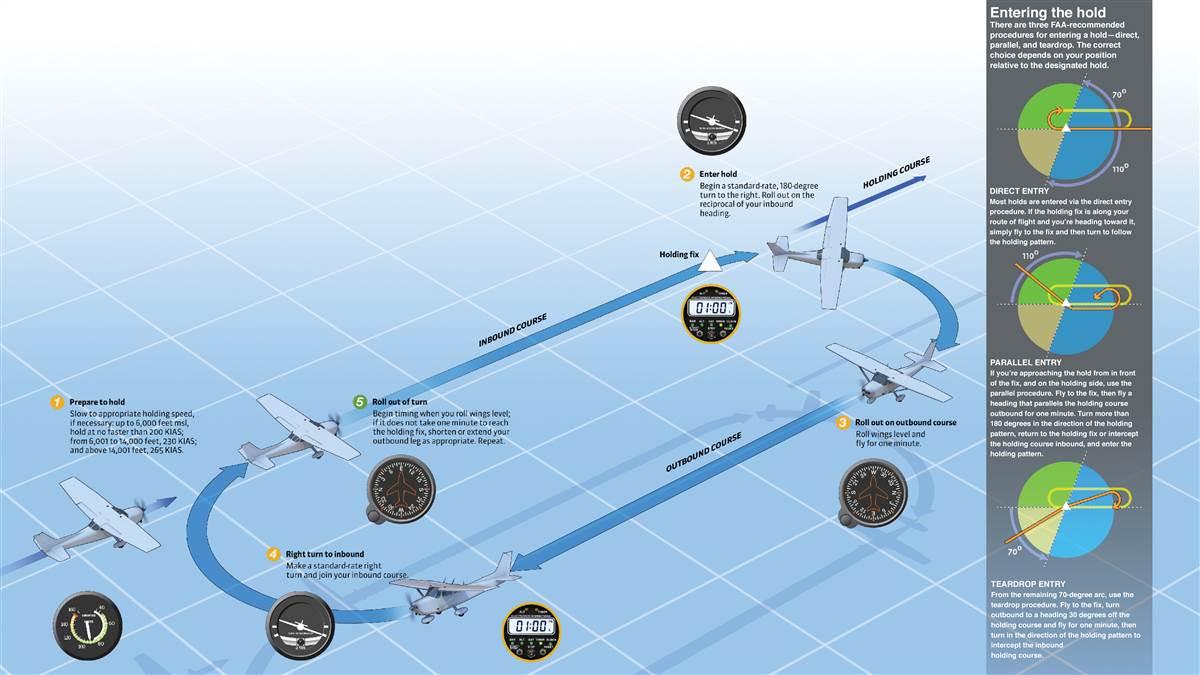Technique: Instrument holds
Around and around we go
Holds can be issued by air traffic control if the ceiling and visibility are low and arrivals to an airport have to perform a full instrument approach (or worse, are “going missed”—not landing because they couldn’t see the runway through the clouds, and are going back to try again); they also can happen when traffic volumes are high, or if there’s a problem such as a communications radio failure ahead.
Holding is a predetermined maneuver that keeps aircraft within specified airspace while they wait for further ATC clearance. A standard holding pattern uses right turns, and a one-minute inbound leg. Holding-pattern airspace provides separation from other IFR aircraft, as well as safe clearance from obstacles. A holding pattern’s alignment usually coincides with the course that will be flown after departing the holding fix. A holding pattern’s size is based on the aircraft’s speed, and there are maximum holding speeds based on altitude.
Sometimes holds are indicated on the appropriate instrument chart, but a hold can be assigned anywhere. If the hold is not charted, the pilot will receive complete holding instructions: the direction from the fix; name of the fix; course; leg length, if appropriate; direction of turns (right turns are assumed unless left turns are specified); and when to expect further clearance. Maintain the last assigned altitude unless the holding clearance specifies a different altitude.
It’s difficult to fly a standard symmetrical holding pattern in windy conditions. In that case, the pilot should compensate for the effect of known winds, except when turning, and adjust his or her outbound timing to achieve a one-minute inbound leg (1.5 minutes above 14,000 feet).




